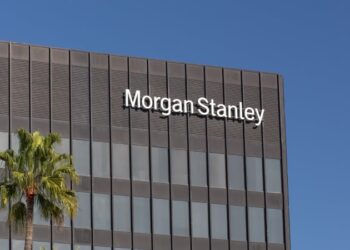After benefiting from record-low interest rates for the good part of a decade, unlisted commercial property returns have been hit by aggressive monetary policy tightening from the Reserve Bank of Australia (RBA) — a cumulative 375 bps in hikes since May 2022.
This has been compounded by subdued demand for retail and office space off the back of the rise in online shopping activity and the shift to remote work during the COVID-19 pandemic.
According to AMP Capital chief economist Shane Oliver, there’s more pain to come, with recent weakness a prelude to “rougher times ahead” for commercial property.
Among three drivers of further weakness in the asset class is changing investor behaviour.
Investors flocked to commercial property as part of their “search for yield” following a sharp decline in bond yields in the record-low interest rate environment.
But Mr Oliver said this “may now have come to an end or be reversing”.
“With each 0.25 per cent fall in property yields translating to a roughly 4 per cent capital gain and with average commercial property yields having fallen from 7.3 per cent to 4.89 per cent between December 2009 to December 2019, this provided a huge boost to returns, averaging roughly 4.3 per cent per annum and pushing values nearly 50 per cent higher over 10 years,” Mr Oliver observed.
“This is now starting to go in reverse.”
This, he added, would be exacerbated by deteriorating macroeconomic conditions and its impact on leasing arrangements.
“Leasing conditions typically deteriorate when the economic cycle turns down as companies lay off workers and cut hiring, retail spending slows and economic activity slows, generally impacting industrial property,” he said.
Economic pressures, Mr Oliver continued, would be “made worse” by entrenched structural changes across the retail and office property market.
He said the retail property market continues to adjust to the rising proportion of online shopping activity.
“The share of retail sales online has gone from around 7 per cent pre-pandemic to around 11 per cent now and this is acting to constrain retail space demand and rents,” he noted.
Meanwhile, while acknowledging there has been a post-pandemic return to the office, office employees continue to average two days a week in the office.
“There are huge benefits to working together physically around culture, collaboration, idea generation and learning from others, but there are also benefits to working from home in terms of no wasted commute time, more focused work, less damage to the environment, better family flexibility and life balance,” he said.
“Once the pandemic revealed these benefits, they can’t then be unseen. And cost focused companies with hot desking, laptops, and work anywhere IT have pushed their staff in that direction anyway.
“The ideal for most is probably somewhere in between the extremes at say two-three days a week in the office but a return to the pre-pandemic norm of four-five days is most unlikely.”
Mr Oliver said he expects firms to downsize their office space once their leases expire, potentially resulting in a 30–40 per cent reduction in demand.
Ultimately, this triple threat to the commercial property market could trigger capital values decline in excess of 15 per cent.
“The combination of the back-up in bond yields resulting in a stalling if not reversal of ‘search for yield’ demand for commercial property, slowing economic activity, and structural threats to office and retail space demand leaves unlisted commercial property at risk of significant capital loss ahead,” he said.
This heightens banking stability risks, particularly in the US, with the troubled regional banking sector highly exposed to the asset class.







